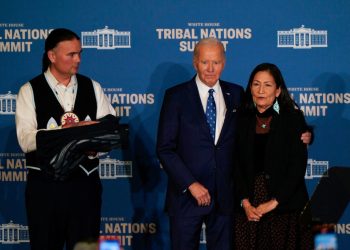Curtis Carr was just 9 years old in 1927 when he and his brother were sent to a boarding school for Native Americans in Chilocco, Oklahoma.
“He started running away in 1934 and was picked up and returned a couple of times and successfully made his last escape in 1935,” said K. Tsianina Lomawaima, Carr’s daughter and a professor in the School of Social Transformation at Arizona State University. “He survived it, but he reacted very strongly against the authoritarianism.”
Like tens of thousands of Indigenous children and teens, Carr and his brother attended one of the hundreds of government-funded and largely church-run Indigenous boarding schools established across the U.S. and Canada in the 19th and 20th centuries.
Many children were physically and sexually abused at the schools, and up to 6,000 died at schools in Canada, according to government officials. Reports Friday of a mass grave containing the remains of 215 children found on the site of Canada’s former Kamloops Indian Residential School served as a stark remind of the dark history.
“It was obscene what happened in Canada, and I know from speaking to survivors of Indian boarding schools in the United States, this was not isolated to Canada,” said Mary Ellen Turpel-Lafond, director of the Indian Residential School History and Dialogue Centre at the University of British Columbia and a member of the Muskeg Lake Cree Nation.
An ‘unthinkable loss’:Mass grave with remains of 215 children found at Indigenous school…


























































